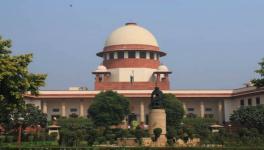Future of Women’s Studies Centres Hanging in Balance, Yet Again
Image for representational use only.Image Courtesy : The Hindu
By the end of this month, hundreds of teachers and staff under the Women’s Studies (WS) Centres in universities and colleges across India may lose their jobs.
On March 12, 2019, the University Grants Commission (UGC) published the Guidelines for Women’s Studies 2019 that massively reduced the budget allocation for the WS Centres.
However — after the protest registered by the Indian Association for Women’s Studies (IAWS) gained media attention — the UGC on March 20, 2019 issued a hurried notice stating that the new guidelines may be treated as “draft guidelines”, and even invited “feedback from all the stakeholders” till April 5, 2019.
While this backtracking by the UGC provides a breather to the Women’s Studies faculty, staff and scholars across the country, it is not clear whether the funding for the WS Centres would be restored to earlier levels.
Massive Fund Cuts Envisaged
The new guidelines issued on March 12 cut the fund allocation to Rs 35 lakh per annum for university-level centres and Rs 25 lakh per annum for college-level centres.
WS Centres in our country exist in four phases — Phase I, Phase II, Phase III and the Advanced Centres for Women’s Studies (ACWS). Under Phase I, there are mostly ‘college-level centres’ that do not engage in coursework teaching, but in organising campus activities in the form of workshops and programmes and consultations with other disciplinary departments.
Also Read: Women's Studies: the Story So Far
Many centres that started out under Phase I were upgraded over time, and with funding from the UGC, were turned into ‘university-level centres’ under Phase II and Phase III, that also engage in teaching and research. And then there are the 10 Advanced Centres for Women’s Studies in universities across the country.
The Rs 35 lakh allocation for university-level centres translates into a massive cut — by Rs 12.5 lakh for centres under Phase II, by Rs 29 lakh for centres under Phase III, and by Rs 40 lakhs for the Advanced Centres for Women’s Studies in Universities.
Surprisingly, as the IAWS noted in its initial press statement, no recent official statistics regarding the Women’s Studies Centres in the country exist.
“Indeed, no explanation has been given for the reduced allocation anywhere in the guidelines.
Nor is there any information on the number of existing WSCs, let alone details regarding how many are in Phase I, Phase II, Phase III, or even the number of Advanced Centres,” said the IAWS in its initial response to the new guidelines.
“We can therefore only go by the information provided in the earlier document issued in 2012-13, which had recorded the existence of 82 university WSCs. It may be assumed that most of these Centres were at Phase II or phase III levels, and perhaps 10 of them would be Advanced Centres,” the response further said.
At present, there are estimated to be between 154 and 163 WS Centres in universities and colleges across the country.
Indrani Mazumdar, ex officio member of the IAWS, told NewsClick that the new guidelines do not mention any teaching and research staff at all, mentioning only project officers and non-teaching staff, besides a professor-director.
Indeed, this appears to be a rather ‘NGO-ised’ approach to Women’s Studies, rather than treating it as an academic discipline and research field.
“The old Centres had Phase I, II and III and advanced Centres, with the different funding pattern and got faculty, staff, research personnel, etc. appointed in more than 10 numbers using the then salary component which ranged from Rs. 40 Lakh to Rs. 60 Lakh,” said a memorandum by the IAWS to the UGC.
“The new pattern of funds has almost halved the funding for Universities where only Rs. 15 Lakh has been earmarked towards Salary which will hardly cover the salary for Director in the Professor cadre,” it said.
The other staff to whom salary has been defined cannot be covered with the allocation under salary head, said the IAWS.
What’s more, the new guidelines said that “a full time Director without any additional responsibility is to be appointed” — even as the fund allocation under the salary head is too low.
If the new funding of Rs 35 lakh is implemented, it would “have huge implications on the teaching, research, outreach, staff deployment and WSCs will suddenly lose their staff and faculty so also their performance and sustenance,” said the IAWS.
“The research projects committed with the research staff will get collapsed. The teaching programme at P.G, M.Phil levels will drastically suffer without teachers and question the life of the students. The worst crisis will be faced the faculty and staff who will leave the institution all on a sudden which might have serious economic, psychological, health implications,” it said.
Mazumdar told NewsClick that the IAWS now plans to submit a more detailed memorandum to the UGC on the requirements of the WS Centres in the country.
Recent History of Uncertainty
Two years ago, the future of the centres for Women’s Studies across the country was plunged underneath a sword.
Days before the Twelfth Plan period was to end on March 31, 2017 — along with the Five-Year Plans, as decided by the Modi government — the UGC issued a notice stating it would continue its expenditure under the Plan head only till March 31, 2018.
The funding for a number of academic research centres in the country — such as the Centre for Study of Social Exclusion and Inclusive Policy, set up under the Eleventh Plan (2007-2012) — was slotted under the Plan head. Funding for the Women’s Studies Centres too were slotted under the Plan head. The WS Centres began receiving funding from the Sixth Plan onwards and were expanded in number under the Twelfth Plan.
Also Read: Death of the University, Indian Style!
In June 2017, the UGC sent out yet another notice stating that expenditures under the Plan head would continue only up to September 30, 2017. After that, the extension of financial support for Plan schemes would be subject to a review by the UGC.
On August 23, 2017, the IAWS organised a National Convention on Women’s Studies Centres in Delhi attended by more than 200 participants, including students, researchers, faculty and staff.
After the convention drew media attention, the UGC on August 24 hurriedly issued a public notice, just like this time around, referring to “a news item published in one of the prominent National daily newspapers” about the impending withdrawal of funding for WS. The notice said that “there is no such proposal to cut or stop support to Women Study Centres being funded by the UGC".
After the March 12, 2019 guidelines, the IAWS said in a press statement, “The importance of continued support was reiterated in the public commitment given by the UGC in August 2017. We are therefore at a loss at the backtracking on this commitment through the new guidelines,”
Women’s Studies as a discipline has roots in the women’s movement in the country. In 1971, a Committee on the Status of Women in India was set up to examine for the first time the social, economic and political status of women in India. The report was meant for a United Nations international women’s year convention at Mexico in 1975.
In 1974, the committee came up with the ‘Towards Equality’ report, which made clear how shockingly the status of women in India had been deteriorating since Independence.
Already, women’s groups had begun organising around issues such as sexual violence, property, dowry and other gendered social ills — triggered by cases such as the Mathura rape case (1972), where a tribal teenage girl was raped by two constables inside a police station in Maharashtra and the Supreme Court had acquitted the accused while blaming the victim.
The IAWS was set up in 1982. It was only in 1986 that women’s studies was officially recognised as an academic discipline as part of the National Policy on Education.
WS centres in the country have produced invaluable research that has not only served as a guiding light to and a check on policy, but has added to knowledge production in the academic discipline worldwide, training and empowering lakhs of young people — especially young women — as scholars who question the status quo and the patriarchal social realities and assumptions handed down to them, besides contributing tremendously to other fields such as economics, politics and even science.
Get the latest reports & analysis with people's perspective on Protests, movements & deep analytical videos, discussions of the current affairs in your Telegram app. Subscribe to NewsClick's Telegram channel & get Real-Time updates on stories, as they get published on our website.
























